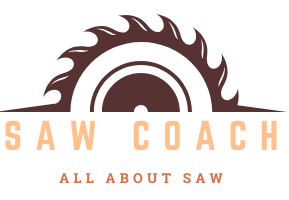A table saw blade stuck on arbor can transform a routine maintenance task into a frustrating challenge for woodworkers. When the blade becomes immovably wedged, it requires strategic intervention using specialized techniques, precise tools, and careful mechanical manipulation to successfully dislodge without damaging expensive equipment or risking personal injury. Understanding the root causes and implementing systematic removal strategies can help professionals and DIY enthusiasts overcome this common workshop predicament.
Why Does a Table Saw Blade Get Stuck?
What Causes Blade Binding?
Several critical factors contribute to blade binding on a table saw arbor:
| Factor | Description | Impact Level |
|---|---|---|
| Rust | Corrosion between blade and arbor | High |
| Over-Tightening | Excessive nut compression | Medium |
| Material Degradation | Accumulated debris and residue | Low |
How to Diagnose Blade Attachment Issues?
- Inspect arbor for visible rust or corrosion
- Check blade alignment and potential warping
- Examine threading for damage or deformation
Effective Blade Removal Techniques

Can Penetrating Oil Help?
Penetrating oils like WD-40 serve as crucial first-line solutions:
– Apply generously around arbor nut
– Allow 5-10 minutes for oil to penetrate
– Helps break down rust and lubricate threads
What Tools Are Recommended?
Essential tools for blade removal include:
– Six-point socket wrench
– Adjustable wrench
– Rubber mallet
– Pipe clamp
– Penetrating oil
– Protective gloves
How to Apply Mechanical Leverage?
When standard methods fail, advanced techniques become necessary:
– Use pipe clamp across two wrenches
– Create controlled, steady pressure
– Rotate in blade’s opposite rotation direction
Safety Precautions During Removal
What Protective Measures Matter?
- Unplug table saw before maintenance
- Wear cut-resistant gloves
- Use eye protection
- Work in well-lit area
- Maintain stable workspace
How to Prevent Future Binding?
Preventative maintenance strategies:
1. Clean arbor after each use
2. Apply light machine oil periodically
3. Store saw in dry environment
4. Use proper torque when reinstalling blade
5. Inspect blade and arbor regularly
Advanced Troubleshooting
When Should You Replace Components?
Consider replacement if:
– Significant rust exists
– Threading appears damaged
– Blade shows structural compromise
– Repeated removal attempts fail
Can Professional Repair Help?
For complex scenarios:
– Consult manufacturer support
– Visit professional woodworking repair shop
– Consider authorized service centers
Technical Insights
Arbor Specifications
- Standard arbor diameter: 5/8 inch
- Typical thread pitch: 5/8-16 UNF
- Material: High-grade steel
Final Recommendations
Successful table saw blade removal requires patience, proper technique, and systematic approach. Always prioritize safety, use appropriate tools, and understand your specific saw’s mechanics.
Pro Tip: Document your removal process for future reference and potential warranty claims.
